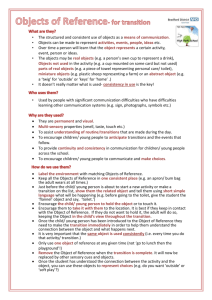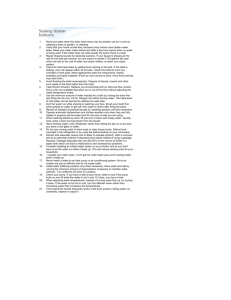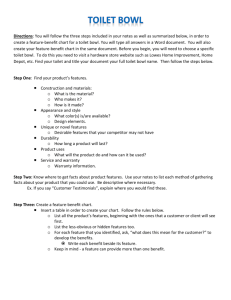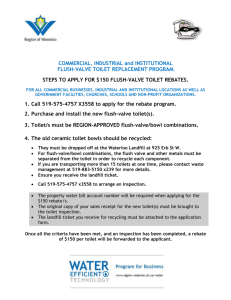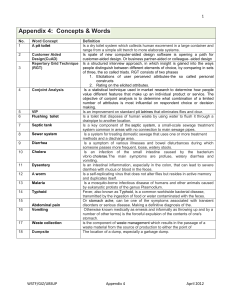TOILET TRAINING FOR CHILDREN WITH AUTISM
advertisement
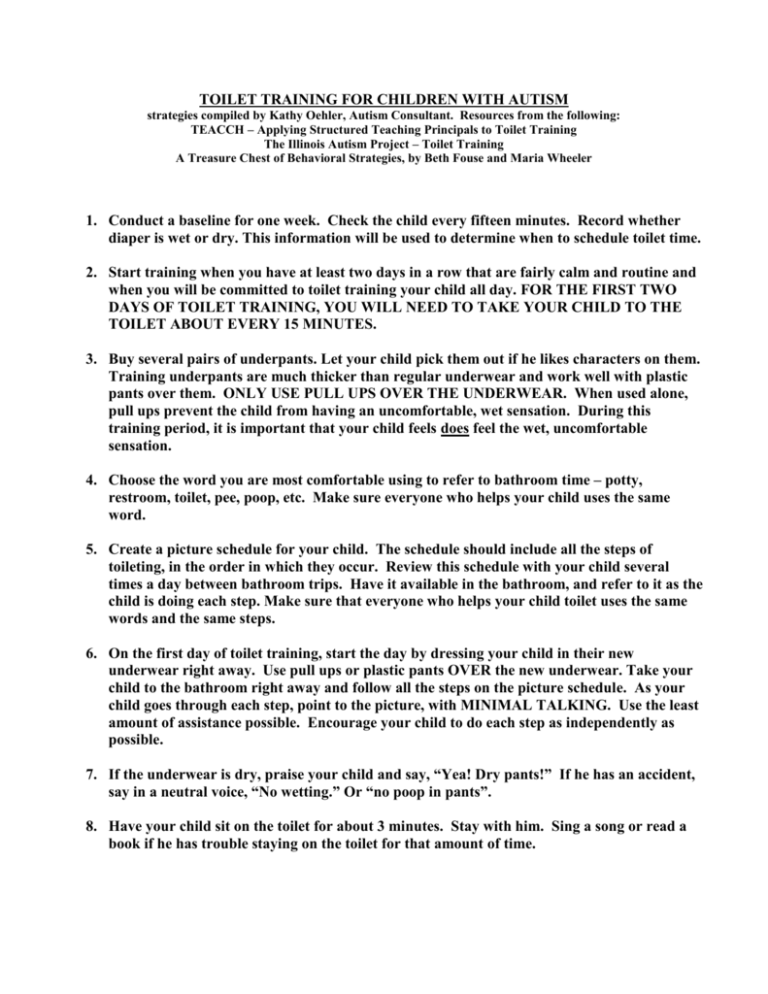
TOILET TRAINING FOR CHILDREN WITH AUTISM strategies compiled by Kathy Oehler, Autism Consultant. Resources from the following: TEACCH – Applying Structured Teaching Principals to Toilet Training The Illinois Autism Project – Toilet Training A Treasure Chest of Behavioral Strategies, by Beth Fouse and Maria Wheeler 1. Conduct a baseline for one week. Check the child every fifteen minutes. Record whether diaper is wet or dry. This information will be used to determine when to schedule toilet time. 2. Start training when you have at least two days in a row that are fairly calm and routine and when you will be committed to toilet training your child all day. FOR THE FIRST TWO DAYS OF TOILET TRAINING, YOU WILL NEED TO TAKE YOUR CHILD TO THE TOILET ABOUT EVERY 15 MINUTES. 3. Buy several pairs of underpants. Let your child pick them out if he likes characters on them. Training underpants are much thicker than regular underwear and work well with plastic pants over them. ONLY USE PULL UPS OVER THE UNDERWEAR. When used alone, pull ups prevent the child from having an uncomfortable, wet sensation. During this training period, it is important that your child feels does feel the wet, uncomfortable sensation. 4. Choose the word you are most comfortable using to refer to bathroom time – potty, restroom, toilet, pee, poop, etc. Make sure everyone who helps your child uses the same word. 5. Create a picture schedule for your child. The schedule should include all the steps of toileting, in the order in which they occur. Review this schedule with your child several times a day between bathroom trips. Have it available in the bathroom, and refer to it as the child is doing each step. Make sure that everyone who helps your child toilet uses the same words and the same steps. 6. On the first day of toilet training, start the day by dressing your child in their new underwear right away. Use pull ups or plastic pants OVER the new underwear. Take your child to the bathroom right away and follow all the steps on the picture schedule. As your child goes through each step, point to the picture, with MINIMAL TALKING. Use the least amount of assistance possible. Encourage your child to do each step as independently as possible. 7. If the underwear is dry, praise your child and say, “Yea! Dry pants!” If he has an accident, say in a neutral voice, “No wetting.” Or “no poop in pants”. 8. Have your child sit on the toilet for about 3 minutes. Stay with him. Sing a song or read a book if he has trouble staying on the toilet for that amount of time. 9. If he successfully goes, praise him and give him a motivating reward such as a favorite snack or bubbles, or access to a toy that is only available when he goes to the bathroom in the toilet. 10. When your child has an accident, tell him “No wetting” or “no poop in pants’. Show him the picture schedule and take him to the restroom and follow the full toileting sequence. Have him sit on the toilet for 2 – 3 minutes. USE MINIMAL TALKING. Have him finish the toileting sequence, then have him carry the soiled underpants to the washing machine. Then have him get dressed by himself, with as little assistance as possible. DO NOT SCOLD OR PUNISH YOUR CHILD FOR ACCIDENTS. Just return to the toileting schedule. 11. As your child stays drier for longer periods of time, move your toileting schedule to more natural periods – before play, before and after meals, before bed, etc. 12. Bowel training should be started when a child does not soil at night. For bowel training, determine the time of day when the child most frequently has a bowel movement. Do his bowel training around this time. Use the process detailed above, but have the child remain on the toilet for approximately 15 minutes at a time. PROBLEM SOLVING Some children with autism will struggle with very specific fears and areas of resistance. Here are some strategies to try if your child has one of these concerns: Resists sitting on the toilet Allow to practice sitting without removing clothes Allow child to sit on toilet seat with part of the hole covered by cardboard or a towel Use a potty seat on the floor instead of up high on the toilet Take turns sitting; or have a doll sit on the toilet first Add physical support Help him understand how long he will have to sit (sing a potty song five times; play three songs on tape recorder; set a timer, etc) Afraid of flushing Don’t flush until there is something to flush Start the flush with the child standing away from the toilet, near the door Give advance warning, with a smile on your face – “ready, set, flush!” Allow the child to flush Overly interested in flushing Give the child something else to hold and manipulate, such as a water tube or glitter tube Use visual schedule to show him when flush is supposed to occur Playing with toilet paper Remove toilet paper roll if it is a big problem; use Kleenex instead Roll out the paper ahead of time Count the squares you want him to use. Make the counting part of his visual schedule Resists being cleaned Try different materials – wet wipes, cloth, sponge, etc Try different temperatures of the water Take turns wiping a doll

